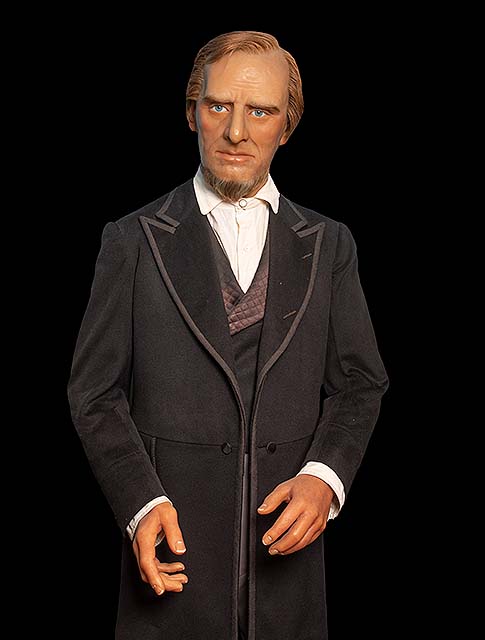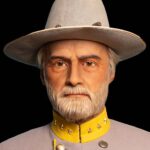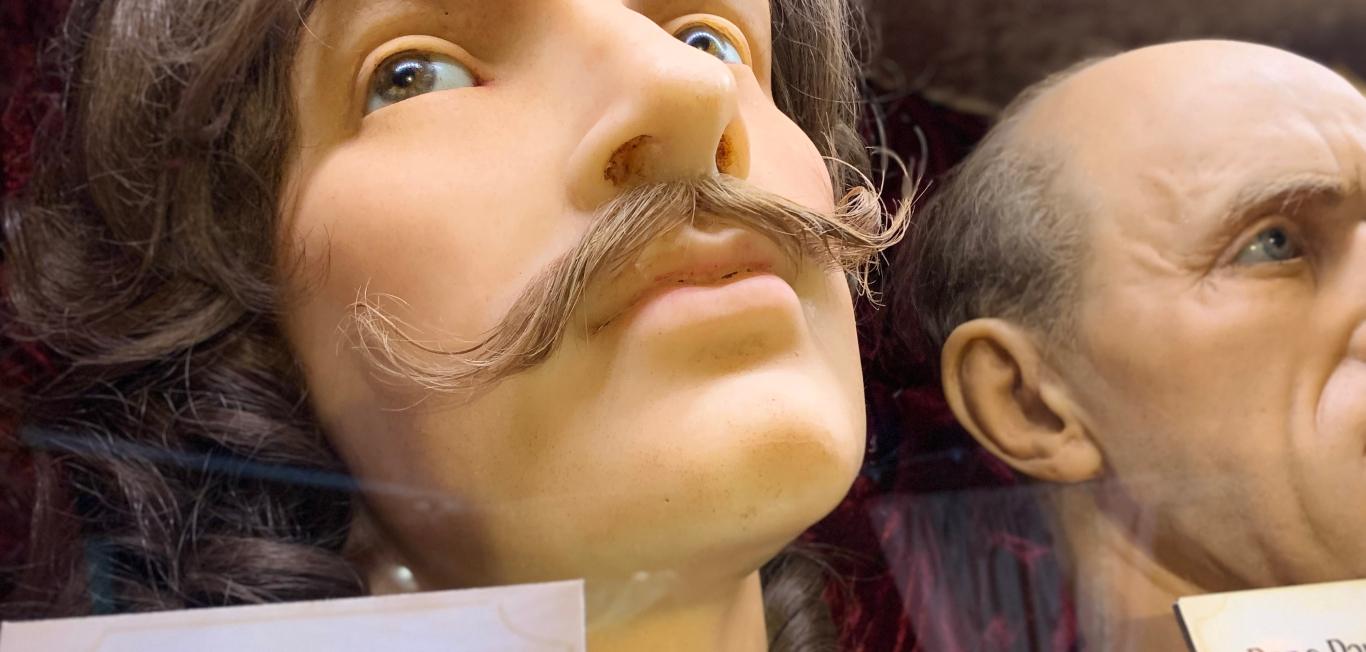Biography of Jefferson Davis
Jefferson Davis began his political career in the U.S. House of Representatives for Mississippi in 1845. With a deep military background and congressional experience in both parts of the legislative branch, Davis unintentionally rose into the perfect position to become the first and only President of the Confederate States of America from 1861 to 1865 during the American Civil War. A man of peace, despite leading the new nation against the United States of America, Davis always wanted unity and diplomacy, whether that be as one nation or two divided.
Supported from a young age to pursue all of his educational and military pursuits, Davis dived into his interests, serving in multiple American wars in his younger days. Making multiple transitions between serving in Congress as a Mississippi representative and serving as a general in American defense, Davis was a well-rounded leader capable of taking up the heavy role of President of the Confederacy in 1861. While unsuccessful in establishing the Confederate States of America as an independent nation, with a crumbling internal government amidst an economically draining war, which the South wasn’t initially prepared for, Davis still proved the force of the rebellion, leading the Confederacy against the Union for four years.
Jefferson Davis died on December 6, 1889, at 81, in New Orleans, Louisiana. He is remembered for being the only president of the Confederacy and for leading the seceded Southern states in the deadliest American battle against Northern Union forces, albeit unsuccessfully. Despite failure in the American Civil War, Davis always remained firm in his beliefs of states’ rights and slavery, defending the right of the eleven Confederate states to secede from the Union under the Constitution until his death.
DID YOU KNOW?
Davis is remembered for being the only president of the Confederacy.
Interesting Facts about Jefferson Davis
Jefferson Davis was not only named after President Thomas Jefferson, but was given the middle name Finis, meaning “final” in Latin, as a nod to his parents’ wish for him to be their last child.
Davis was adequate as a military cadet, only graduating in twenty-third place in a class of 33 from the United States Military Academy.
Jefferson Davis, while attending Transylvania University and the United States Military Academy, was best friends with future Confederate General Albert Sydney Johnston. Robert E. Lee and Joseph E. Johnston, both prominent Confederate generals, were in the class behind Davis at the United States Military Academy.
Davis ran for governor of Mississippi in 1851, but was unsuccessful despite having a rich background in congressional Mississippi politics.
Early Life of Jefferson Davis
Jefferson Davis was born on June 3, 1808, in Christian County, Kentucky, to parents Samuel and Jane Cook Davis as the last of their ten children. Samuel Davis was a Revolutionary War veteran and a planter, moving his family to the Mississippi plantation, Rosemont, when Jefferson was only three. Living a comfortable life in Mississippi, Jefferson looked up to his oldest brother, Joseph, who was a big supporter of his educational pursuits. At seven, he was sent to a Dominican all-boys school in Kentucky for three years, a religious order of the Roman Catholic Church. At thirteen, he enrolled at Transylvania University in Kentucky, where he studied for three years before moving to the United States Military Academy at West Point, where he would graduate after four years in 1828.
After graduating as a military cadet, Davis would go on to serve as a lieutenant in the Wisconsin Territory. When the Black Hawk War broke out in 1832 between U.S. and Native American forces, Davis served under Colonel and future president Zachary Taylor. At this time, he met Taylor’s daughter, Sarah Knox, whom he quickly fell in love with. After serving two years posted in Arkansas, Davis resigned his commission in 1835 and married Sarah against her father’s wishes. The couple moved to a plantation in Mississippi on land gifted to Jefferson by his older brother, Joseph. Tragically, Sarah died three months after their wedding from malaria fever. Overcome by grief, Davis spent the next seven years of his life secluded in his Mississippi home, focusing on growing his cotton plantation and becoming well-versed in constitutional law and literature.
In 1845, Jefferson Davis was elected to the U.S. House of Representatives by Mississippi constituents, marking the beginning of his political journey. In that same year, Davis would marry his second wife, 18-year-old Varina Howell. The two would eventually conceive six children, four boys and two girls, with only their daughters surviving into adulthood. In 1846, Davis resigned from Congress to serve as a colonel in command of the First Mississippi volunteers in the Mexican-American War. After seeing great success in the war and after suffering a severe injury in 1847, Davis rejected a promotion to brigadier general to re-enter politics, this time with the U.S. Senate. Fittingly, he would quickly become chairman of the Military Affairs Committee.
In 1853, President Franklin Pierce named Davis Secretary of War, as he was well-versed in both political and military strategies. In his new position, Davis grew the army forces, strengthened coastal defenses, and led three surveys for railroads to the Pacific. At the end of Pierce’s presidency, Davis returned to the Senate, where he voiced strong support for states’ rights while also trying to create harmony between the North and South, who were facing mounting tensions at the time.
DID YOU KNOW?
In 1853, Davis was named Secretary of War.
Unfortunately, these tensions broke into conflict a few years later in December 1860, when South Carolina became the first of eleven states to secede from the Union. While Davis was in support of Southern Democrats, who sought federal protection for slavery in all U.S. territories, he still didn’t agree with secession, despite believing that the Constitution gave rights to the states to do so. His desire for peace was one that would shine through, even when his home state, Mississippi, seceded from the Union on January 9, 1861, leading Davis to depart from Congress once again.
The American Civil War
To understand Jefferson Davis’s historical significance, you have to understand the history behind the American Civil War first. Also known as the War Between the States, the American Civil War was a four-year domestic conflict between the United States of America and the eleven states that seceded from it, unifying to create the Confederate States of America. The eleven states under the Confederacy included, in order, South Carolina, Mississippi, Florida, Alabama, Georgia, Louisiana, Texas, Virginia, Arkansas, Tennessee, and North Carolina. With a revised death toll of anywhere from 752,000 to 851,000 (roughly 2% of the 1860 U.S. population) between the Union and Confederate forces, the Civil War is known for being the deadliest conflict in American history.
Stemming from decades of surmounting tension between the North and South over slavery, civil war wasn’t necessarily out of the question for the nation. In the Southern states, the economy was widely dependent on plantations and, in turn, slaves. As the main producers of commercial crops such as cotton, which had seen major price hikes in the 1850s, the South didn’t want to give up its enslaved labor force. Plantations were highly profitable, with three-fifths of the country’s wealthiest individuals in 1860 being Southerners.
On the other hand, the Northern states had leaned heavily into industrialization, turning away from slavery as the primary driving force behind the economy. While agriculture was still prominent in the North, these farms, usually smaller than full-blown plantations, were built with free labor. Beyond agriculture came investments in transportation (railroads, canals, steamboats, and roads), financial industries (banking and insurance), and large communication networks (newspapers, magazines, books, and telegraphs).
This caused a clear divide in political spheres; Southerners were avid supporters of the expansion of slavery, and Northerners were heavily against it. In a time of rapid territorial growth, successfully winning wars against opposing forces over land, arguments over slavery between pro-slavery and antislavery forces in American politics began with the Missouri Compromise of 1820. As a perfectly divided nation on the matter of slavery, Missouri was only allowed to join the Union as a slave state after Maine moved to join as a free state around the same time.
It was with President Abraham Lincoln’s election in 1860 that the foundation for the American Civil War began to form into conflicting factions. As a member of the strictly antislavery Republican Party, Lincoln was seen as a threat to the first seven states of the Confederacy, and the motivation behind their secession. With Abraham Lincoln serving as President of the United States of America (or the Union), the newly formed Confederate States of America only needed to name their own leader: President Jefferson Davis.
President of the Confederacy
President of
the Confederacy
On January 21, 1861, only 12 days after Mississippi seceded from the Union, Jefferson Davis left the Senate to return to his Brierfield plantation in Mississippi. Before he reached home, Davis was called to serve as major general for Mississippi’s armed forces, tasked with preparing the state for defense. Yet, only two weeks later at the Confederate Convention in Montgomery, Alabama, he was called to serve in a different position: provisional president of the Confederacy.
DID YOU KNOW?
In 1861, Davis was called to serve as provisional president of the Confederacy.
This came as a surprise to Davis, but one that he accepted nonetheless. On February 18, 1861, Jefferson Davis was sworn into office as the first president of the Confederacy. A man of peace, his first act in office was to send a peace commission to Washington, D.C., in hopes of preventing armed conflict. At Lincoln’s refusal and decision to send armed ships to Charleston, South Carolina, to supply Union forces at Fort Sumter, Davis reluctantly ordered the fort to be bombarded from April 12-13, 1861, marking the beginning of the American Civil War.
As president, Davis was forced to balance constructing a new, independent nation while also preparing it for war and invasion, which the South was poorly equipped for. As mentioned before, the South had primarily relied on agriculture and slavery as the dominant economic powerhouse, unlike the North, which had invested in infrastructure and industrialization that made it the stronger wartime force. However, this didn’t stop Davis from quickly establishing factories for military production, repairing shoddy railroads, and reaching out to European forces in hopes of buying arms and ammunition, as well as seeking out recognition as a new American nation.
In June 1862, Jefferson Davis appointed the infamous Robert E. Lee to serve as commander of the Army of Northern Virginia. Over the course of the next few years, the two would stand steadfast in their decision to continue the war, despite having deep internal governmental issues. With a divided Congress and a poor vice president, the Confederate States of America saw great struggle. On top of these political tensions, military forces were slowly worsening under the hardships of a war they weren’t initially prepared for, and the economy was heavy with inflation.
On April 9, 1865, unbeknownst to Davis, Robert E. Lee surrendered to Northern forces, bringing forth the end of the American Civil War. With better numbers, a better naval force, and greater industrial and financial resources, the Union declared victory over the Confederate States, taking down the nation before it could ever truly form independently. After the surrender, Davis and his cabinet tried to reach the Mississippi area in hopes of seeking out better terms from the North, but were captured at dawn on May 10, 1865, in Georgia by Union forces. He was taken to Fort Monroe in Virginia, where he was imprisoned in leg-irons for treason against the United States of America, marking a swift close to his presidency.
Accomplishments
In the Mexican-American War, Jefferson Davis successfully won the 1847 Battle of Buena Vista by utilizing tactics that were applauded even in the European press.
Davis is widely considered one of the most capable administrators in history as Secretary of War under President Franklin Pierce, driven by his strong military background and deep political knowledge.
Jefferson Davis was the first and only person to serve as the President of the Confederate States of America, which only officially existed between 1861 and 1865.
Upon his death, Davis was accorded one of the largest funerals in the South at his temporary interment in New Orleans and was widely regarded and respected as the great leader of the Old South.
Late In Life
In May 1867, after serving two years in prison, Jefferson Davis was released on bond. While many Northern lawyers offered their help in his treason trial, Davis was never actually tried for his crimes, mainly because the government feared that the case would firmly establish that the Constitution gave the states the right to secede from the Union, leading to the case being dropped on December 25, 1868.
For a few years, Davis would bounce between Canada, the United States, and Europe, all in an effort to regain his failing health. Eventually, his family settled in Tennessee for a couple of years, where he would serve as president of an insurance company in Memphis. In 1877, he would officially retire and move to settle into his Mississippi estate, Beauvoir, where he would write his two-volume book titled The Rise and Fall of the Confederate Government, published in 1881. Mississippi tried to return Davis to the U.S. Senate, but in his refusal to seek an official pardon for his role in the American Civil War, remaining firm in his decision to defend states’ rights under the Constitution, he was found not legally qualified to serve.
DID YOU KNOW?
Davis later served as president of an insurance company in Memphis.
Davis never regained citizenship in his lifetime, although it was posthumously restored in 1978. In the early hours of December 6, 1889, at the age of 81, Jefferson Davis died from acute bronchitis (possibly sourced from malaria or cancer) in New Orleans, Louisiana, where he was awarded one of the biggest funerals in the nation. While initially buried in the Army of Northern Virginia tomb at Metairie Cemetery in New Orleans, his body was moved to the Hollywood Cemetery in Richmond, Virginia, in 1893 at the request of his widow, Varina Davis. In death and burial, he joined thousands of Confederate soldiers and many of his key generals, a president resting with his constituents from a nation responsible for the deadliest American war in history.
FAQs
How did Jefferson Davis die?
Jefferson Davis died in the early hours of December 6, 1889, at the age of 81 in New Orleans, Louisiana, from acute bronchitis, although there is speculation that malaria or cancer may have also contributed to his decline. After his 1867 release from imprisonment, Davis’s health never returned to a prime state, with the former Confederate president making five trips to Europe in an effort to regain his health.
How did Jefferson Davis become the President of the Confederacy?
Jefferson Davis, a man with a rich military background and years of congressional experience, was seen as an obvious choice to be the President of the Confederacy. As a strong supporter of the values held by the Confederacy and as a longtime resident of the second state to secede from the Union, the Confederate Convention found Davis to be the natural leader of the rebellion, much to his surprise.
Why was Jefferson Davis imprisoned?
Jefferson Davis was imprisoned for treason, but was never tried for it, after being captured by Northern forces in Georgia on May 10, 1865. As the leader of the opposing force and subsequent loser of the American Civil War, Davis was initially imprisoned in a damp casemate at Fort Monroe, Virginia, with leg-irons, but was later moved to improved conditions due to Northern outrage at his mistreatment. Davis spent two years in prison before being released on bond.
How many books did Jefferson Davis write?
Jefferson Davis wrote a two-volume book outlining his wartime experiences titled The Rise and Fall of the Confederate Government. A historical retelling of the American Civil War, it is a direct look into the Confederacy and Davis’s justifications for the war, and subsequent apologies and reasons behind his Southern failure. His book was published in 1881.
Where is Jefferson Davis’s final resting place?
Although initially buried in New Orleans in the Army of Northern Virginia tomb at Metairie Cemetery, Jefferson Davis’s final resting place is at Hollywood Cemetery in Richmond, Virginia, alongside many notable Confederate generals and over 18,000 Confederate soldiers. Davis was moved in 1893 at his widow’s request. Also buried in the cemetery are U.S. Presidents James Monroe and John Tyler.










